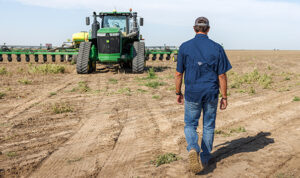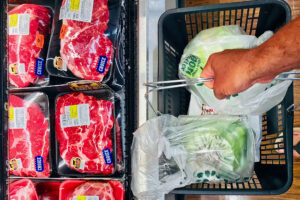Key takeaways Profitability Outlook Improves: The hog sector continues to show profitability, with projected margins averaging approximately $30 per head over the next 12 months. Q4 offers potential profit opportunities. Producers should manage downside risk, while allowing for some upside in the current market. Tight Supplies Support Prices Amid Uncertainty: Low pork volumes in cold storage, lighter carcass weights and strong summer demand all support cutout values, even though global trade is a wildcard that could limit upside or provide a strong tailwind. Trade and Consumer Trends Are Critical Wildcards: Export demand—particularly from Mexico and China—remains essential but is susceptible to disruptions from tariffs and ongoing trade tensions, should they persist. U.S. consumers continue to show resilience, supported by a strong labor market and wage growth outpacing inflation. However, signs of financial strain are emerging among some households as retail sales have declined and delinquency rates for consumer debt continue to rise. Profitability on the Upswing for 2025 The hog sector is showing signs of improved profitability, supported by strong domestic demand, export demand and easing feed costs. Iowa State University’s farrow-to-finish margins ended May with a $22.51 per head profit—marking 14 consecutive profitable months. Looking ahead, my projections show margins averaging $54.51 per head for Q3, and more than $29 per head over the next 12 months. Producers may have opportunities to lock in fourth-quarter profits. I project margins can be in the black in November and slightly in December. Evaluating risk management strategies will be key. Despite trade uncertainties and consumer price sensitivity, steady export demand—especially amid potential U.S.–China negotiations—could offer support. I forecast Q3 hog prices to average $96/cwt., before falling to an average just over $80/cwt. in Q4. Elevated beef and chicken breast prices, combined with seasonally reduced pork production, are expected to bolster pork cutout values through summer. Summer Sizzle Meets Supply Strain In May 2025, pork stocks in cold storage reached over 450.9 million pounds—down 1.1% from April and down 6.5% from last year, marking the lowest May level since 2010. This reflects a tight supply environment. Year-to-date (YTD) slaughter rates are about 1% below last year. Limited inventories, lighter carcass weights, and strong seasonal demand are expected to support cutout values through Q3. My annual cutout value for 2025 is projected between $103/cwt and $104/cwt. If realized, this would be the fourth highest average cutout over the past 25 years. Monthly averages are expected to peak at $116 in July, then decline to $107 by September. However, a wide range of outcomes, with consumer demand and trade policy shifts likely to influence final values. Primal Cutout Highlights Hams (Currently $114.22/cwt.): Strong export demand from Mexico and solid retail demand have pushed weekly values approximately 24% above the 5-year average and 57% above the 10-year average. Loins (Currently $98.43/cwt.): While values followed seasonal trends to begin the year, they fell flat around mid-March. Price momentum has picked up since as supplies are tight and prices are particularly competitive with beef and chicken options. Bellies (Currently $186.10/cwt.): Weekly values around mid-June were 42% and 41% above the 5- and 10-year averages, respectively. Prices may continue their strong tone as bellies typically strengthen seasonally heading into July. Cold storage is 26% below last year. Retail demand is expected to rise, though foodservice demand may lag. Ribs (Currently $171.97/cwt.): Prices strengthened after the Memorial Day holiday, in line with typical seasonal trends that support firm values through June. Cold storage is 5% higher than last year, while values remain slightly below their 5-year average and 5% above the 10-year average. Butts (Currently $147.17/cwt.): Prices remained firm heading into June, following seasonal trends. Values are currently 7% above their 5-year average and 24% above their 10-year average. Cold storage levels are 20% below last year, and strong retail demand for pulled pork is providing additional support. Picnics (Currently $90.49/cwt.): Prices have rebounded since the second week of May after falling flat during their traditional seasonal pick-up in mid-April. Since the second week of May, the picnic primal value has increased over 28% with seasonal values 29% and over 38% above their 5- and 10-year averages, respectively. Cold storage for bone-in picnics is up 27% year-over-year (YOY), indicating some supply-side pressure. Supplies May Tighten as Demand Stays Strong The Lean Hog Index and the nearby futures month must converge at expiration. Currently, July 2025 futures are trading around $113/cwt. With cash hogs at $108/cwt., the cutout value would need to reach around $128 to justify that futures price. This is not at all out of the realm of possibility as volatile as the cutout has been, but demand needs to stay strong in order to keep packer margins at a level that they’re willing to pay at summer futures prices. Hams and bellies—along with renewed support from butts and picnics—have carried the cutout into the third quarter. With beef prices at record highs and pork loins priced below chicken breasts, there was hope that demand would rally, and it certainly has in a big way. One wildcard I’m monitoring closely is porcine reproductive and respiratory syndrome (PRRS). There’s growing speculation that cases may be running higher than usual in parts of the Midwest. Typically, the number of positive PRRS cases in wean-to-finish sites and sow farms declines in May, but both remain elevated over seasonal trends according to the Swine Health Information Center. Additionally, lower-than-average carcass weights among packer-owned hogs—suggesting aggressive drawdowns—and slaughter numbers that are short of projections both point to tightening supplies. However, national aggregate numbers did not show large negative impacts from USDA’s June Hogs and Pigs Report. The Financial Health of the U.S. Consumer Retail beef prices continue to remain elevated relative to pork and broilers, with the beef-to-pork ratio hitting 1.71—well above historical norms and remaining near the 2020 peak. Consumer response will be key to shaping summer meat demand. Despite inflation and high interest rates, U.S. consumers remain resilient, supported by a strong labor market and real wage growth. However, signs of strain are emerging: the personal savings rate has dropped to 4.3% (below the 10-year pre-pandemic average of 5.3%), and household debt rose by $167 billion in Q1 2025 to a record $18.2 trillion. However, when adjusted for inflation, this remains 3.8% below the Q4 2008 peak. Collectively, households appear to be managing debt well. As of late 2024, debt service payments were under 11.3% of disposable income—below the 12.5% average seen at the start of past recessions. However, inflation-adjusted per capita disposable income grew only 1.1% YOY, lagging the long-term average of 2.1%. Additionally, consumer confidence fell in June. Signs of consumers and households pulling back financially are emerging. Retail sales in May fell 0.9%, more than the market had anticipated, while delinquency rates on consumer debt (30+ days delinquent) increased to approximately 4.9% during Q1 2025, the highest level since Q3 2015. Now that the collection on defaulted federal student loans has officially resumed after a five-year hiatus, many borrowers face steep declines in their credit standing, which will increase borrowing costs. This will be an issue to watch in the coming quarter. Shifts in consumer diets and habits may be driving stronger protein consumption. A 2024 Kaiser Family Foundation poll found that about 13% of U.S. adults have used a GLP-1 medication such as Ozempic, with roughly 6% currently using one. These medications are often accompanied by recommendations to increase protein intake as part of a broader lifestyle change. USDA projects per capita pork disappearance to increase from 49.9 pounds in 2024 to 50.3 pounds in 2025, indicating steady domestic demand. However, pork faces competitive pressure from broiler production and lower chicken prices, which may attract price-sensitive consumers—especially if beef prices remain elevated. Trade Risks Threaten Demand In April, U.S. pork exports totaled 582.9 million pounds—down 9% from March and 11% YOY. Despite this dip, January through April exports are only 4% below last year’s strong pace, indicating steady demand. Compared to 2024 levels, calendar YTD exports to major markets like Mexico, Japan, Canada, and South Korea declined in April, but Latin America showed strong growth: Colombia: +14% Honduras: +20% Panama: +24% Guatemala: +34% Cuba: +109% These gains are helping offset losses elsewhere. Additionally, strong YTD growth was seen from the Philippines at 34%. Mexico remains the top buyer, accounting for over 37% of U.S. pork exports in 2025. However, recent U.S. tariffs on steel and tomatoes may prompt retaliation. President Claudia Sheinbaum has hinted and threatened possible tariffs on U.S. pork, which could significantly pressure hog prices and market momentum. China, while accounting for only 6.4% of total pork exports this year, bought over 62% of U.S. variety meats in 2024. Its pork tariffs dropped from 172% in April to 57% in May, with some cuts like fat and intestines taxed at 30%. China is also increasing imports from Spain, and with the U.S.-China trade agreement expiring in August, uncertainty looms. Bottom line: Latin America offers growth potential, but trade tensions with Mexico and China pose risks. With exports projected to account for 24.7% of U.S. pork production in 2025, stable trade relations are vital to protect farm-level prices and profitability. Market Forces to Monitor Despite improved profitability, high construction costs and elevated interest rates could remain a barriers to expansion moving forward. Industry sources estimate that new construction now costs $400 to $450 per pig space. The Federal Reserve’s June Summary of Economic Projections indicated two 25-basis-point rate cuts are expected in 2025, which is consistent with Terrain’s projections for the year. With the current 7.5% prime rate, longer-terms may ease monthly payments but increase total interest costs. Historically, low rates from 2012 through 2021 supported industry growth during periods of expansion. As producers recover from 2023 losses, many are reassessing risk tolerance. Key decision factors include biosecurity, succession planning and weighing opportunity against risk. The June Hogs and Pigs report leaned neutral-to-bearish, with the U.S. breeding herd down about 0.5% from last year, while market hog inventory rose 0.4%. A modest increase in pigs per litter and young pig numbers point to continued strong supply, which could weigh on prices if demand softens. The most notable surprise came from the 120- to 179- pound category, where USDA estimated 15.26 million head—up nearly 0.5% YOY and above pre-report expectations. From a marketing perspective, this could influence August to October contracts. Looking ahead, stable inventory and breeding levels point to consistent production, but demand factors will likely drive market dynamics in the near term. This outlook may shift over the summer due to variables such as weather impacts on crops and their influence on feed costs, inflation, currency fluctuations, labor policy, and trade developments.
More Articles
See All InsightsHILO, HI., (August 15, 2023) – Farm Credit Association American AgCredit, rural banking partner CoBank, and The Federal Agricultural Mortgage Corporation, also known as Farmer Mac,…
Key Takeaways: Weather, Acreage, and Tariff Uncertainty = Price Risk: A hot and dry summer forecast, changing planting data, and the looming expiration of U.S.-China tariff
By Dave Weaber, Senior Animal Protein Analyst, and Don Close, Chief Research & Analytics Officer In last month’s article, we explored the resilience of consumers in



